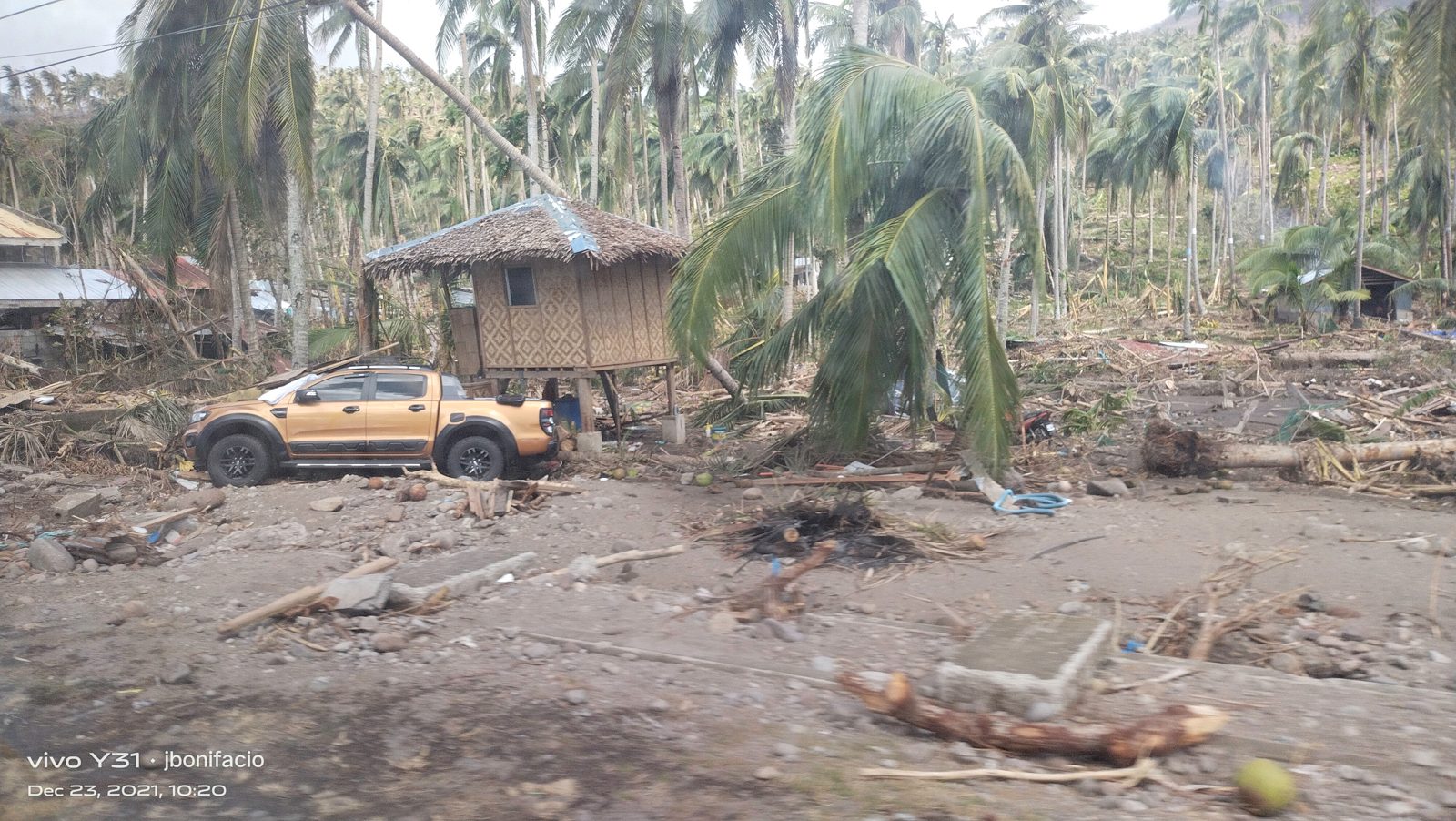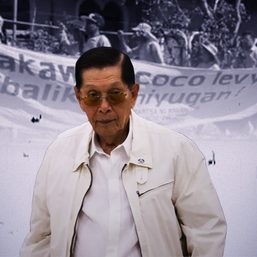SUMMARY
This is AI generated summarization, which may have errors. For context, always refer to the full article.

MANILA, Philippines – Typhoon Odette (Rai) felled 10 million trees in areas all over the Philippines, a major blow to coconut farmers in the country who are already among the poorest workers.
Philippine Coconut Authority Administrator Benjamin Madrigal Jr. reported the extent of damage to the coconut industry on Monday, December 27, during a meeting with President Rodrigo Duterte. His report was aired on Tuesday, December 28.
“Twenty-five percent of the damage to agricultural crops was coconuts,” he said in Filipino, during the meeting held in Malacañang.
Of the 10 million totally damaged coconut trees, a majority (5.7 million) were in Region 13 (Caraga) in Mindanao. In Region 8 or Eastern Visayas, 3.9 million trees were totally damaged.
All over the country, 11 million trees were partially damaged, meaning they can still be rehabilitated.
In order to help clear the totally damaged trees in Caraga and Eastern Visayas, the PCA gave away 500 chainsaws to farmers. PCA personnel were on the ground to ensure only totally damaged trees were cut to make sure those that could still be rehabilitated are not further damaged, said Madrigal. The wood from the felling of totally damaged trees would then be used to build temporary shelters for people who lost their houses, he added.
To aid affected farmers, the PCA chief said current coconut programs will be concentrated on regions hit by Odette. Some P225 million in the agency’s coconut fertilization program can be channelled to Regions 4B (Mimaropa), Western, Central Visayas, Eastern Visayas, and Caraga.
Around P34.4 million in the intercropping program, which provides farmers with short-term crops like vegetables, could go to the affected areas as well. Along with the provision of ruminant animals like cows and goats, the efforts are intended to help farmers have a source of income or food while they nurse their coconut trees back to health.
Use of Coconut Trust Fund
The damage wrought by Odette on the coconut sector underlines the urgency of making use of billions worth of pesos in coconut levy funds, from taxes imposed by the Marcos dictatorship on farmers but ended up in the hands of Ferdinand Marcos’ cronies. The government was eventually able to take back this money and just last February, Duterte signed into law the creation of a Coconut Farmers and Industry Trust Fund so farmers can finally benefit from the money.
Madrigal is keen to use the trust fund to help farmers reeling from Typhoon Odette. But he said Duterte still has to approve the Coconut Farmers and Industry Development Plan, as stipulated by the law that created the trust fund.
“As for the Coconut Farmers and Industry Development Plan, we are ready to implement, it is just going through vetting by different agencies,” said Madrigal.
The PCA is waiting for the nod of the finance department and budget department, after getting the endorsement of the National Economic and Development Authority and trade department. It will then be submitted to Duterte for approval which would then allow for disbursements of portions of the coconut trust fund.
According to law, at least P5 billion of the trust fund must be disbursed every year for the benefit of farmers.
“Out of the P5 billion initial allocation, around P835 million can be devoted for rehabilitation and social protection to the regions mentioned. This can go to farm improvement, native livestocks to be given away to farmers, dairy program, crop insurance, on top of what [Agriculture Secretary William Dar] mentioned,” said Madrigal.
The law stipulates that specific percentages be allocated for specific initiatives each year, as follows:
- Development of hybrid coconut seed farms and nursery for planting and replanting – 20%
- Training of farmers and their families on coconut production and technologies – 8%
- Research, marketing, and promotion – 5%
- Crop insurance – 4%
- Farm improvements through diversification or intercropping – 10%
- Shared facilities for processing – 10%
- Organizing and empowerment of coconut farmer organizations and their cooperatives – 5%
- Credit programs – 10%
- Infrastructure development in coconut producing local governments – 10%
- Scholarship program for farmers and their families – 8%
- Health and medical program for farmers and their families – 10%
Will coconut farmers finally make use of the Coconut Trust Fund, when they need it the most? According to Madrigal, the ball is in the court of the Department of Finance and Department of Budget and Management. – Rappler.com
Add a comment
How does this make you feel?




There are no comments yet. Add your comment to start the conversation.